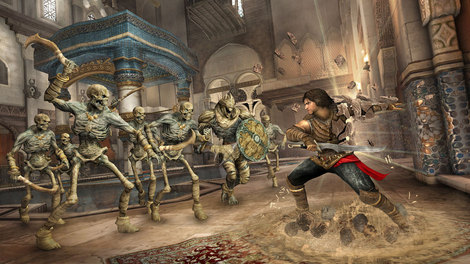It’s 9.03 on a Monday morning. You’ve just sat down, coffee mug in hand, when the boss, AKA the Time Lord, calls for an impromptu ‘catch-up’. There goes your morning.
By midday, you’re just about getting in the zone when your incredibly chatty colleague, AKA the Energy Vampire, stops by your desk on the way to the proverbial water cooler.
Chances are by lunch time, your productivity stats are at an all-time low. The post-lunch hours taken up with the tedium of clearing emails, and trudging through your actual job–which, you remember wistfully, used to be fun.
If only you had productivity boosters you could unlock; an elixir for super speed, or a chassis to ward off the office harpies, for example. If only there was a hack for things beyond your control.
Maybe there is.
Gamification: more than a buzzword

If life was a video game, you’d be invincible. There would be a walkthrough, for one, and the replay button would make it impossible to fail.
While this pipe dream defies the laws of physics, it’s this belief that helps businesses harness the power of gamification for good.
Businesses that take standard parts of the work day and turn them into games have reported happier, more engaged workers who produce work of higher quality – a classic win-win.
Gamification isn’t real-world Millennial click-bait. Businesses have been spicing things up with this concept for decades.
Bonuses are a kind of game, rewarding employees for performance. Sales teams run on leader boards and the adrenaline off the back of smashing targets and finding new ways to lure big fish in.
Gamification makes work fun, progress measurable, and non-financial rewards achievable. What’s not to love?
In the real world
Gamification involves making mundane tasks, like filling out expense forms, time sheets, or clearing emails fun by setting achievable targets, goals and rewards. Frequent flyer programmes, for example, is a long-standing ‘game’ to make customer loyalty fun.
While it sounds great on paper, according to IT research firm Gartner, 80 per cent of gamification programmes fail because they’re not built well, or to last.
Nine ways to implement games at work
1. Don’t make it mandatory. You can’t force fun!
2. Not everything should be a game. Think about what systems and processes are most tedious or most integral to the company that can be gamified. How would you construct a rewards-based game around these processes? Is there a way to balance competition and collaboration?
3. If you gamify a process, will it actually be fun? For employees to adopt gamified processes, they need to be enjoyable, meaningful and competitive within reason. If the targets aren’t achievable, or if it’s too competitive or aggressive, the game could demotivate staff.
Employees may cheat, exploit loopholes, sabotage others or just stop trying.
Deloitte’s Leadership Academy designed a leader board that only ranks users of similar levels, which allows competition based on skill levels with several ‘Top 10’ boards that are reset each week. This prevents new players from getting discouraged, and keeps those in the lead on their toes.
4. Mix it up. Even the most exciting games can get boring with repetition. Think of ways to shake this up every year or quarter.
Creating the perfect game
There’s no formula for gamification. Each business, project, and task has its own opportunity for gamification. As a starter for 10, ask yourself:
Why? Does this process or system need to be gamified?
Are the goals measurable? Vagaries like “improve work environment” or “boost productivity” aren’t enough. “Increase customer conversion by 25 per cent by next quarter,” however, is achievable and measurable.
Is it easy enough to play? If the games are too complex or time consuming, not everyone may be interested in them.
What will be your rewards system? If your company’s culture places competition above all else, consider a game that rewards employees for besting their colleagues. If it’s a collaborative workplace that relies on team work over individual performance, consider games that reflect that.
Already in the market
Zurmo: a customer relationship management tool designed to make sales more fun
Bunchball Nitro for Salesforce: a general purpose gamification engine
Badgeville: offers a number of products, from employee collaboration to customer engagement
Task Hammer: a personal productivity app that lets users smash their to-do lists in a mini role playing game as a barbarian, a rogue or sorceress.
Check out this detailed infographic from WhoIsHostingThis to find out more about the companies currently leading the gamification drive.
 Check out this detailed infographic from WhoIsHostingThis to find out more about the companies currently leading the gamification drive.
Check out this detailed infographic from WhoIsHostingThis to find out more about the companies currently leading the gamification drive.








